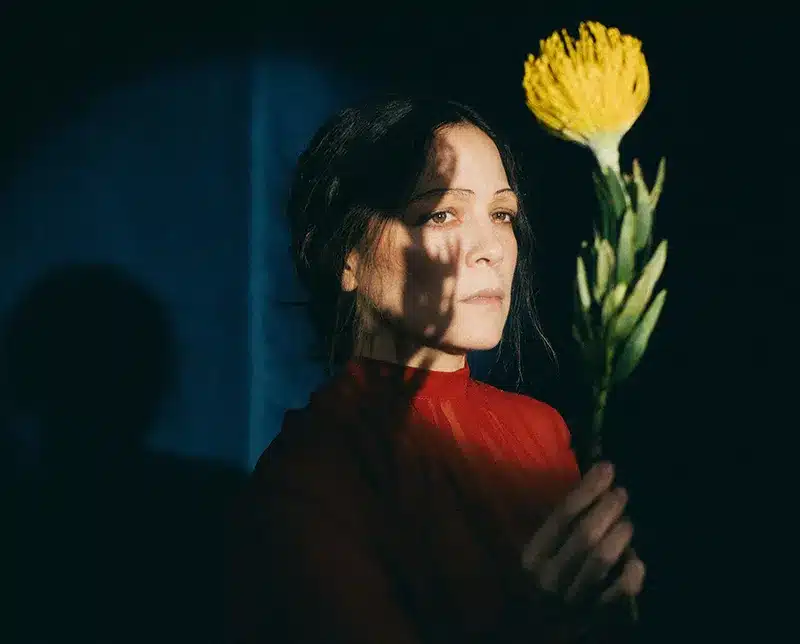
By adopting a new persona, Natalia Lafourcade delves deeper into her folkloric sonic landscape, uncovering new perspectives along the way.
 Cancionera Natalia Lafourcade Sony 25 April 2025
Cancionera Natalia Lafourcade Sony 25 April 2025
As she entered her 40s, Natalia Lafourcade encountered a new facet of herself—La Cancionera, the songstress. Now, with a new album of the same name and a worldwide solo tour, the Mexican singer-songwriter is using this alter ego as a lens through which she can examine herself and her musical career.
This character, La Cancionera, represents a distillation of Lafourcade‘s relationship with music-making, which began long before she became a teenage pop star. It also reflects her many influences—from her musician parents to the iconic Latin divas of bygone eras.

As she began to write the songs for her new album, she started to envision the character of La Cancionera: someone earthy and passionate about music and performing. It was her, yet also not her —the public performer who grew but differed from the private person underneath.
Lafourcade said that as she wrote the title song, she felt like the character was asking her who she was, and also challenging her to dig deeper into her creativity and the emotions channeled by both performers and everyday people. “Songstress, sing, sing freely to the wind / Songstress, always sing your truth / Be a woman, the beautiful muse, be the star of a life.”
For Natalia Lafourcade, the experience led to a burst of creativity, including taking up painting, and she created a “theater of song”, which connected her to everything from Mexican surrealistic cinema to wedding celebrations. She made videos for each song, and in each, Lafourcade appears in the distinctive outfit of La Cancionera—complete with stage makeup and a close-fitting black vest over a white blouse with billowing lower sleeves.
The international Cancionera tour also reflects her desire to create intimacy with listeners, something she stated outright in her 2022 concert at Carnegie Hall (and released as an album in 2024) when she told the audience to imagine they were in her living room. “The idea was to go on tour to celebrate my 40s,” Lafourcade said, “the entrance to my 40s decade; my songs. In a very intimate way—just me and the music. This is something that I was dreaming of for years.”
However, she noted, the album took a different path. “I wanted to make an album that was going to be only me and the guitar at first,” she said. “But then it became what it is right now. The music started to happen. I just felt like there was a whole universe there. I had to give it the chance to have all this instrumentation.”
While there are many delicate, spare moments on the album, such as “La Bruja (The Witch)”, there are also more expansive songs, such as the simmering nightclub noir of the bolero “Cariñito de Acapulco,” with lush orchestration and vocal choruses. There are even two orchestral instrumental tunes, which Natalia Lafourcade wrote during the pandemic but tapped now because she felt they introduced the album’s narrative about “la cancionera”. The orchestrated songs point to her upbringing with two classically trained musicians.
“In a way, it keeps the memory of my childhood and the essence of the story that I keep alive with my parents,” she said. “But also it has to do with the story of la cancionera, and where la cancionera as a character in the album comes from, which is not the same background as mine.”
To plumb what she called “collective creativity”, Lafourcade elected to do a high-wire act of recording each of the songs in a single take and foregoing modern and ubiquitous post-production touch-ups. “We wanted to have the presence of the musicians and the band and the magic that you can build whenever you are in a situation like this one,” she said. “So that was an experiment, and we were exploring this, but we took it really seriously … I really like the fact that this makes you be very in this connection to everyone and to work with the magic of music that you can’t control really. You need to be very humble and be very in service of the music.”
The entire project has been a learning experience for Lafourcade. “Every album, every project that I do, it becomes a before and after,” she said. “You never know what’s going to come. I really appreciate that Cancionera has given me the chance to connect a lot with my authenticity and the feeling and the sense of the game, and to play with people around me at the studio.”
Music has been an integral part of Lafourcade’s life since birth. Her father was a Chilean-born pianist and harpsichordist, and her mother was a pianist and teacher who created the Macarsi Method of teaching music, which emphasizes the connection of music, mind, and body. She developed the method, in fact, after Lafourcade was kicked in the head by a horse as a child and needed rehabilitation.
After a brief stint with a teen pop group, Lafourcade released her first solo album before turning 20, which earned her her first Latin Grammy nomination. Despite her subsequent successes, Lafourcade grew disenchanted with the music industry and relocated to Canada to pursue further education and explore new career opportunities. There, she fell in with a troupe of Afrobeat musicians who used her living space as a rehearsal studio. Eventually, she decided to give a music career another try on her own terms and returned to Mexico.
“When I came back, my mother was like, ‘What did you do with your money?’ and I was like, ‘I don’t know. I was just having fun with my friends.’ And she said: ‘Okay, but you spent it all.’ Like, okay, I don’t have money yet, I don’t have a band, I don’t have anything. So I have to start again.” That restart led to a string of successful albums, collaborations, and acclaim.
The new album extends a line that runs through the latter portion of her career. While her earlier songs were innovative, forward-looking pop, her last few albums looked backward in several ways.
First, she holed up in a house in the countryside and teamed up with two guitarists in their 70s, Los Macorinos, to create acoustic versions of classic Latin American songs. After the two Musas albums were released in 2017 and 2018, she then made two heavily folkloric albums, Un Canto por Mexico, in which she reinterpreted her own songs and covers with a range of guest stars. The Un Canto albums and a tour were organized to raise funds for a cultural center in her home state of Veracruz that had been devastated by an earthquake.
On the new album’s “Cocos en La Playa”, Lafourcade and band create an easy-going beach-vacation vibe that hints at the mixed feelings of a singer who has endured the intense gaze of a worldwide audience since she was a teen. “To shine like the sun on the beach / I need a little bit of calm / To walk lightly on the sand / Without makeup and without luggage / To leave aside the calendars / The airlines, social networks / No more pictures / Only good mornings are allowed.”
Although she has been a sometimes-reluctant pop star, Lafourcade has won more Latin Grammys than any other woman: 18, as well as four Grammys. The new record and tour are giving her a fresh perspective on her music and her diverse array of influences.
“The show is a homage and tribute to my path,” she said. “But it’s also a tribute to others’ paths and ways of approaching the music, the inspiration, the lyrics. I found that very interesting for me, because there are moments when I felt like it’s not the way I would approach that specific moment in the concert—it’s more like this other character that gets into my body, my intention, and the way I am behaving in the concert. I love that. It becomes a game, a very interesting game, and the music gets alive from that intention and that soul.”
In contrast to the album, her current worldwide tour has Lafourcade performing by herself with a guitar, singing, and telling stories. Nevertheless, she still sees the concerts as a way to collaborate, albeit with the audience rather than other musicians.
“I love to see and to experience the power of music,” she said. “I love to know that many times I will not have the control of what happens in the room, what happens in the venue … The energy that [audience members] will bring to the room becomes one energy at a certain point, and I always learn from that. Every night is going to be a surprise. I love the moment when everyone is having fun singing, to see how music unifies that energy and that presence of the audience… that point in the concert, for me, it’s like heaven.”



